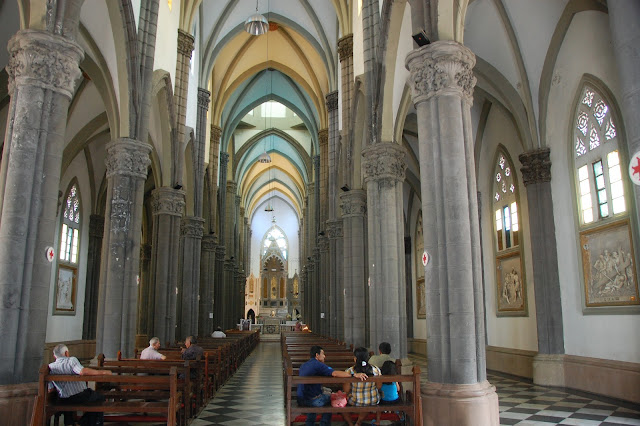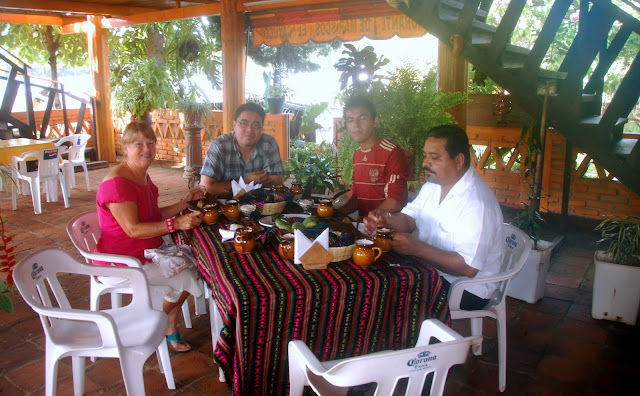best shopping in the country. It is about a four hour round trip bus ride from Bahia Del Sol. Four hours in an El Salvador bus is a bit of a challenge comfort wise, as they are almost identical to US school buses, with the same crappy uncomfortable seats, and like Mexico, there is always room for one more person. However, experiencing this beautiful country up close makes it more then worthwhile.
 |
| Boqueron Volcano Dominates San Salvador's skyline Last active in 1917 |
 |
| Dome of Metropolitan Cathedral |
Most of our time in San Salvador was spent driving in a Taxi from one vista spot to another and from one church to another. I don't know why it is that we don't feel we have seen a town until we visit it's churches, but that's how it is. So we did the church circuit. This time there was a surprise waiting.
 |
| Inside Metropolitan Cathedral Mass was being celebrated |
 |
| Walking to Iglesia El Calvario Built in 1660 |
Iglesia El Calvario is surrounded by
very busy and very noisy markets
 |
The din of the market surrounding the church did not penetrate the cool tranquil interior, helping me understand the importance of medieval churches as places of peace and serenity. |
Last church stop, Iglesia El Rosario. Not a promising sight from the outside.
Inside, what beauty! Light streaming through stained glass set in the high ceiling becomes a rainbow arcing over the central alter.
Opposite the entry, to the right of the alter is a blue sanctuary with the stations of the cross around the three sides.
The lighting was too dim to photograph all the stations. Those that turned out give a sense of the drama of the sculptures.
 |
| Christ Falls |
 |
| He falls again |
 |
| He is nailed to the cross |
I think Iglesia El Rosario provides the reason we always check out the Churches. They are usually a best effort of the community. Sometimes they are stunning.
Having completed the church circuit we retired to our "sanctuary", Starbucks, located on the second floor of La Casona. The La Casona mansion was built in the 1950's by a very prominent El Salvadorian family. During the 60's and 70's it was used as the seat of the Organization of Central American States. It was purchased by the mall developer after the civil war of the 80's. They decided to preserve this beautiful historic home and built the mall around it.
The mall is very high end even by US standards, filled with great shops, including oddly, North Face. On offer, aside from a token backpack or two, is clothing including fleece jackets. Go figure.

























